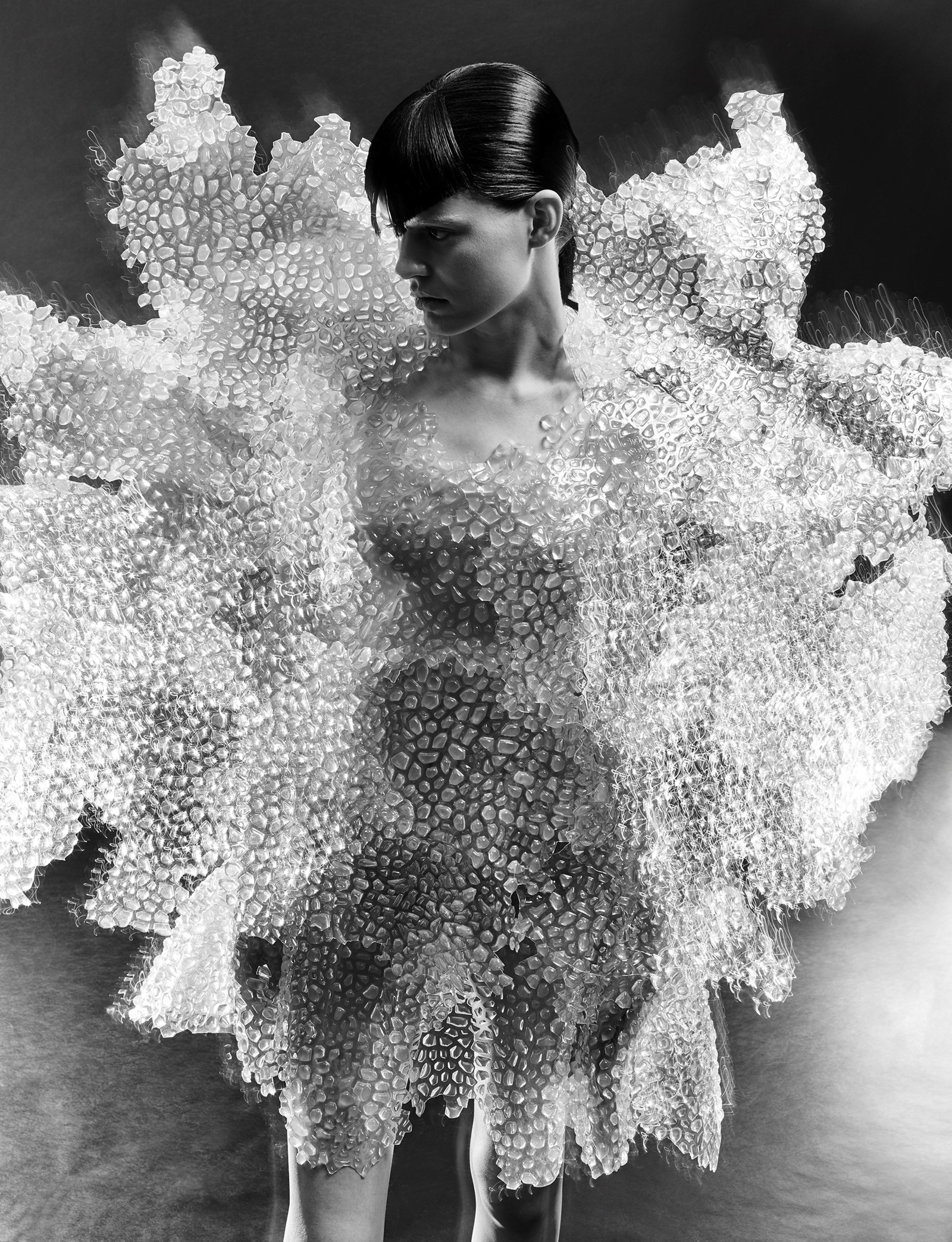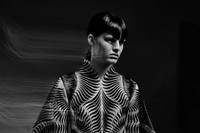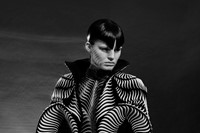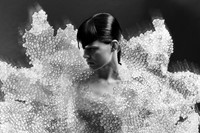We live in a digital age. Technology has made us all participants in a global conversation. We celebrate together; we mourn together too. As the borderless, constant dialogue has got wider and louder, so the fashion world has become more democratic, more open, more instantly accessible and attainable.
Yet there is one facet of the fashion world that remains resolutely and inevitably unattainable to the many: haute couture. Just to say it feels expensive. The art of creating the finest clothes for the very lucky few (just a few thousand worldwide – notoriously private, it’s hard to know exactly how many), couture is fashion’s glittering bastion of artisan handcraftsmanship and skills honed and perfected over generations. Calling to mind images of petites mains painstakingly bringing fairytale gowns to life, it’s certainly tempting to look at it as the anti-technology movement of fashion.
For Iris van Herpen, technology is not an afterthought but central to her approach and vision. The Dutch couturier, who’s renowned for her extraordinary 3D printed dresses, focuses on the transformative power shaped by technology. By experimenting and innovating, Van Herpen not only pushes the boundaries of fabric and craftsmanship but also the boundaries of couture.
Van Herpen’s Spring 2017 couture collection, her second on the official couture schedule, showcases this fascination with technical innovation. Called Between the Lines, it is – according to the show notes – an exploration of “the imperfection of systems and structure in both the physical and digital worlds.” “I was fascinated by digital glitches, and how errors can actually make things more beautiful,” she explains from her Amsterdam atelier. A meditation on imperfection in a world that promises perfection? There’s your first clue that Van Herpen cuts a unique figure in the world of couture.
“I was fascinated by digital glitches, and how errors can actually make things more beautiful” Iris van Herpen
Inspired by the work of Berlin artist Esther Stocker, with whom she collaborated on the collection, this season Van Herpen focused on the gaps in between the structures of her materials, rather then the structures themselves, “shaping patterns that dissimulate the body’s perspective or subtract it.” It forced us to consider what is not there as much as what is. By dwelling on negative space our eyes are tricked into perceiving new patterns occurring between the patterns. As her close, frequent collaborator architect Philip Beesley notes, “This work tends to live at the edges of perception. I notice that Iris often works with things that are stretched and worked to the limits of their capacity, bringing those into gentle, finely tuned balance.”
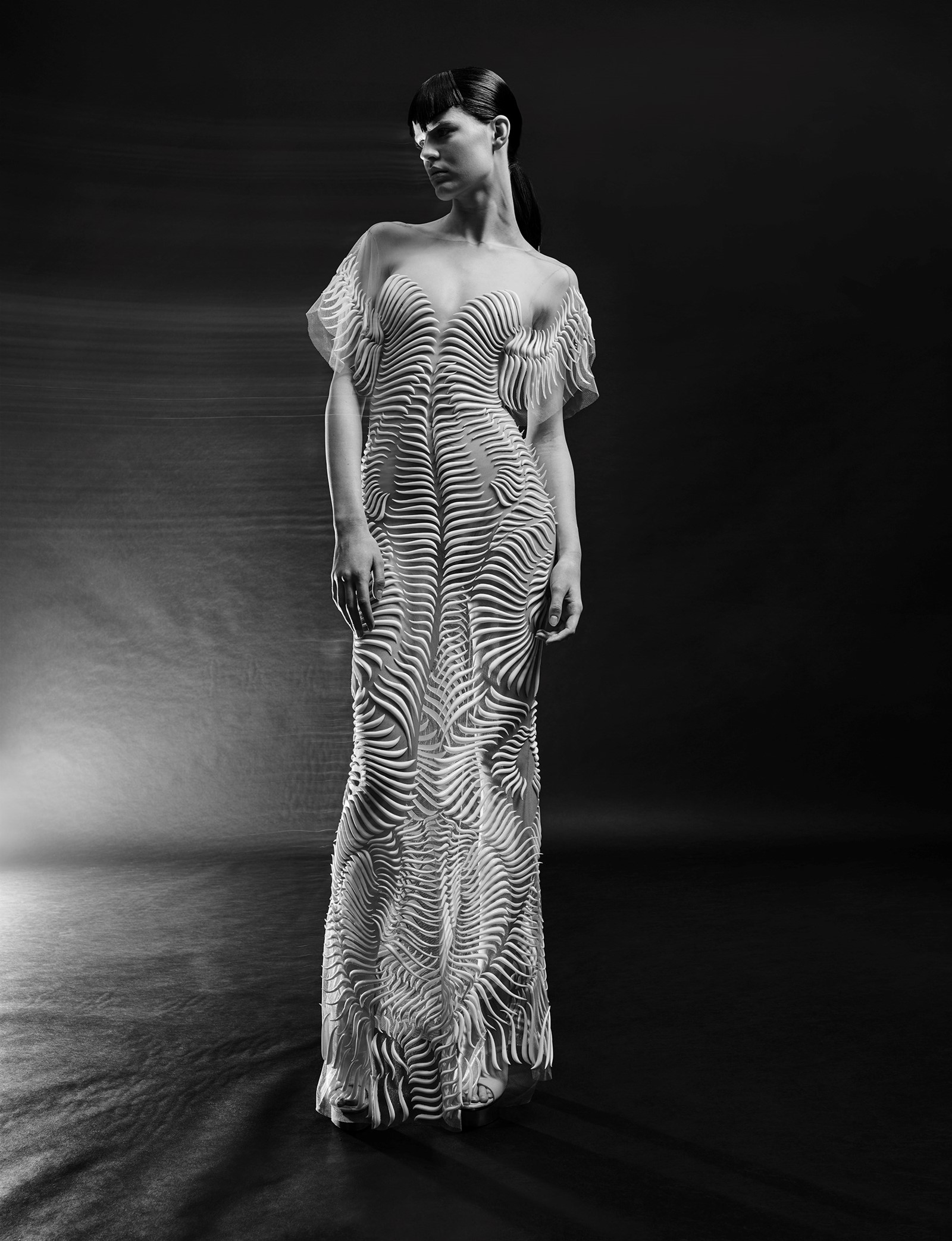
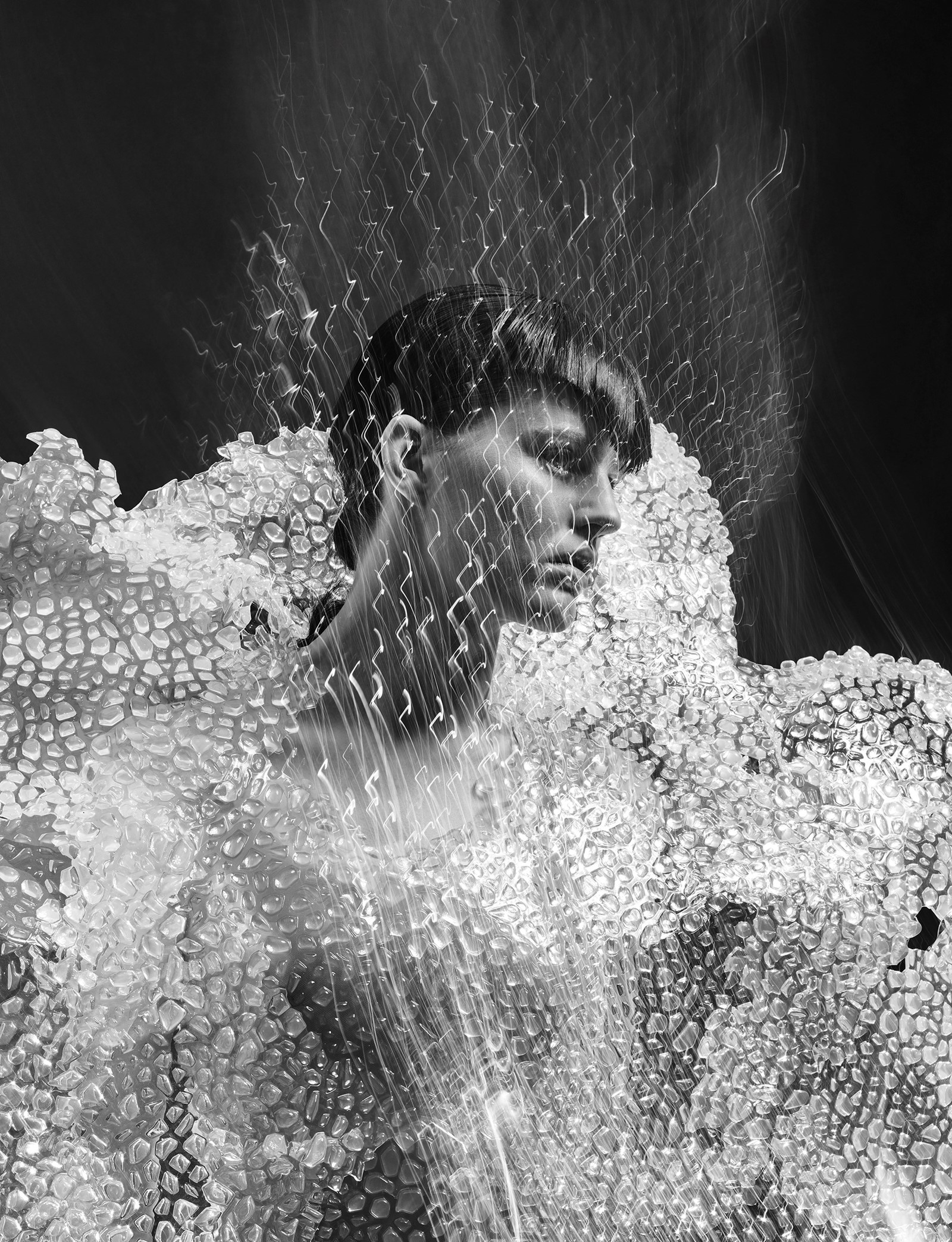
But what of the clothes themselves? Spring 2017 sees jumpsuits encase the body with geometric lace and sheath dresses almost alive with rippling optical illusion waves; mini dresses are cocooned in skeletal ribbing and others appear woven from broken glass. Although Van Herpen refuses to be drawn on whether her designs are sculptures or clothes, there’s certainly a (relative) wearability to the collection. “I think part of Iris’s radical intelligence and extraordinary intuition comes from her experience as a dancer, giving her absolutely extraordinary tactile and kinaesthetic judgement,” says Beesley.
But couture of course is about fantasy first, and the collection’s final look was an exemplary illustration of it. Dubbed the ‘alchemy of light dress’, it appeared to be magicked from a million drops of water suspended around the body, the model not so much wearing it as emerging from it, a sort of futuristic Venus di Milo. A typical wedding dress finale piece? Certainly not. Spectacular? Absolutely.
Of course, it takes painstaking, meticulous craftsmanship to pull off a collection like this. This season she developed a new technique by which hand-casted transparent polyurethane (PU) is hand-painted through injection molding. Sounds intimidating, but Van Herpen is keen to point out “it’s as soft as fabric but moves like a liquid.” She also developed an ultra fine, expandable laser-cut Mylar fabric “that moves in strikingly fast waves, so fast that when you look at it, you’re not really able to understand what you’re seeing.” That closing look required an extensive six-step process (laser-cutting, vacuum-forming, liquid-molding, heat-hand-molding, hand-stitching and machine-stitching) and a whopping 1400 hours to create. Materials used in its construction include silk tulle fabric, PetG (the plastic that “functions as the invisible construction to make the dress float up in the air”) and transparent liquid PU, iridescent foil that is taken out later but poured in the process to leave traces to give the ‘waterdrops’ their magnifying effect.
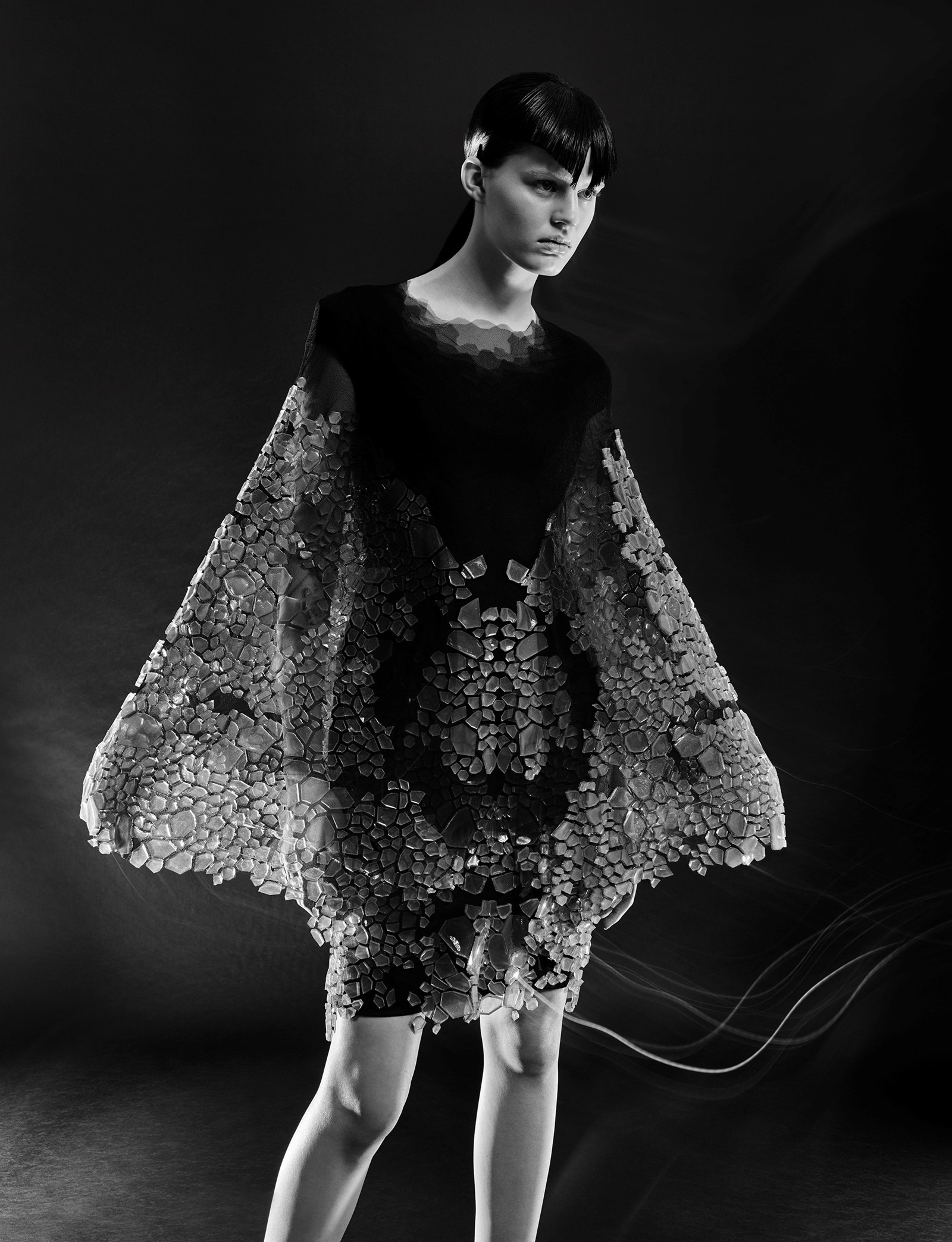
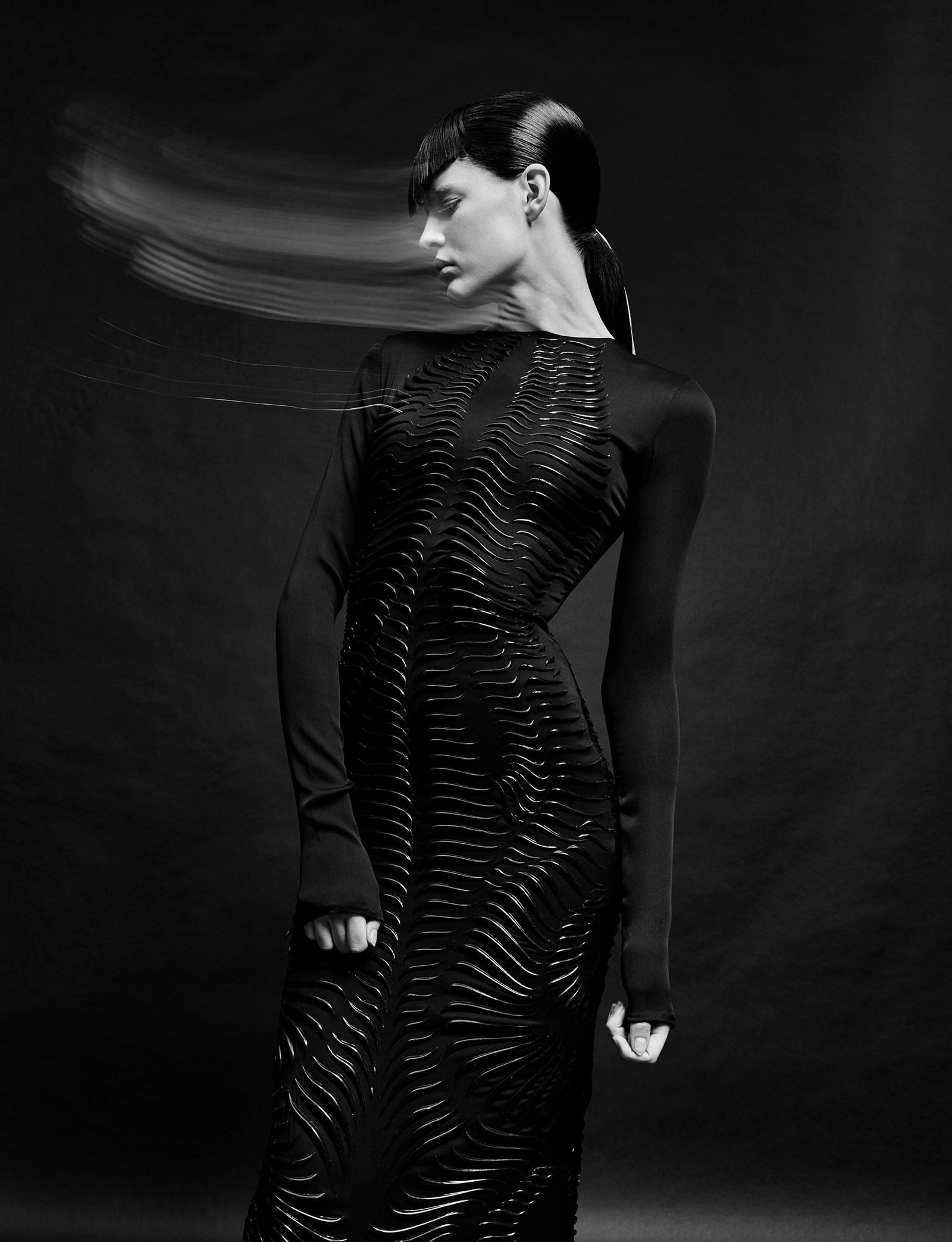
Technology can be a dirty word in fashion; the misplaced suggestion is that it offers the designer a shortcut. It implies that even more maligned concept still: uniformity. That ‘alchemy of light’ dress, however, involves a heat-molding process that is not fully predictable and which meant Van Herpen has to do away with patterns, instead hand-shaping the PepG on the mannequin over several weeks. The result is completely unique, as individual as any of those more traditional, hand-wrought concoctions gliding down the other runways in Paris. “Even if we tried to, it would be impossible to ever make this dress completely the same again,” she says.
Unsurprisingly, for Van Herpen the process is as important as the finished piece. A flip of the script, it’s the material or technique which informs her vision, rather than the means by which she brings that vision to life. “Often a material inspires me to start designing with it,” she tells me. “After so many years, the process has become even more important to me than the final result.”
“After so many years, the process has become even more important to me than the final result” Iris van Herpen
Such emphasis on the material and process might sound clinical, but in fact the opposite is true. Yes it’s precise, carried out with the meticulous rigour of aesthetically motivated scientists, but there is a warmth there – a naturalness even. The human touch is very apparent, concepts go through dozens of rounds of changes and development. Ideas are traded between Van Herpen’s base and Beesley’s. “We tend to share emerging concepts in many cycles, trading sketches, digitally fabricated prototypes and trial mockups. We send things back and forth between our Toronto and Amsterdam studios in a flow of deliveries, Skype meetings and emails, and make the most of working directly together when we can. The constant dialogue between our studios makes a kind of collective intelligence that allows us to tackle new technologies,” Beesley says, observing that actually touching and playing with materials can’t be bettered. “It is striking just how much practical information comes from playing with real materials at full scale, touching them and seeing how they affect our own bodies… By the end several long days and nights, the entire studio is completely filled with new possibilities… To me, Iris’s curiosity seems boundless, with literally hundreds of interim studies, we approach something very close to natural evolution.”
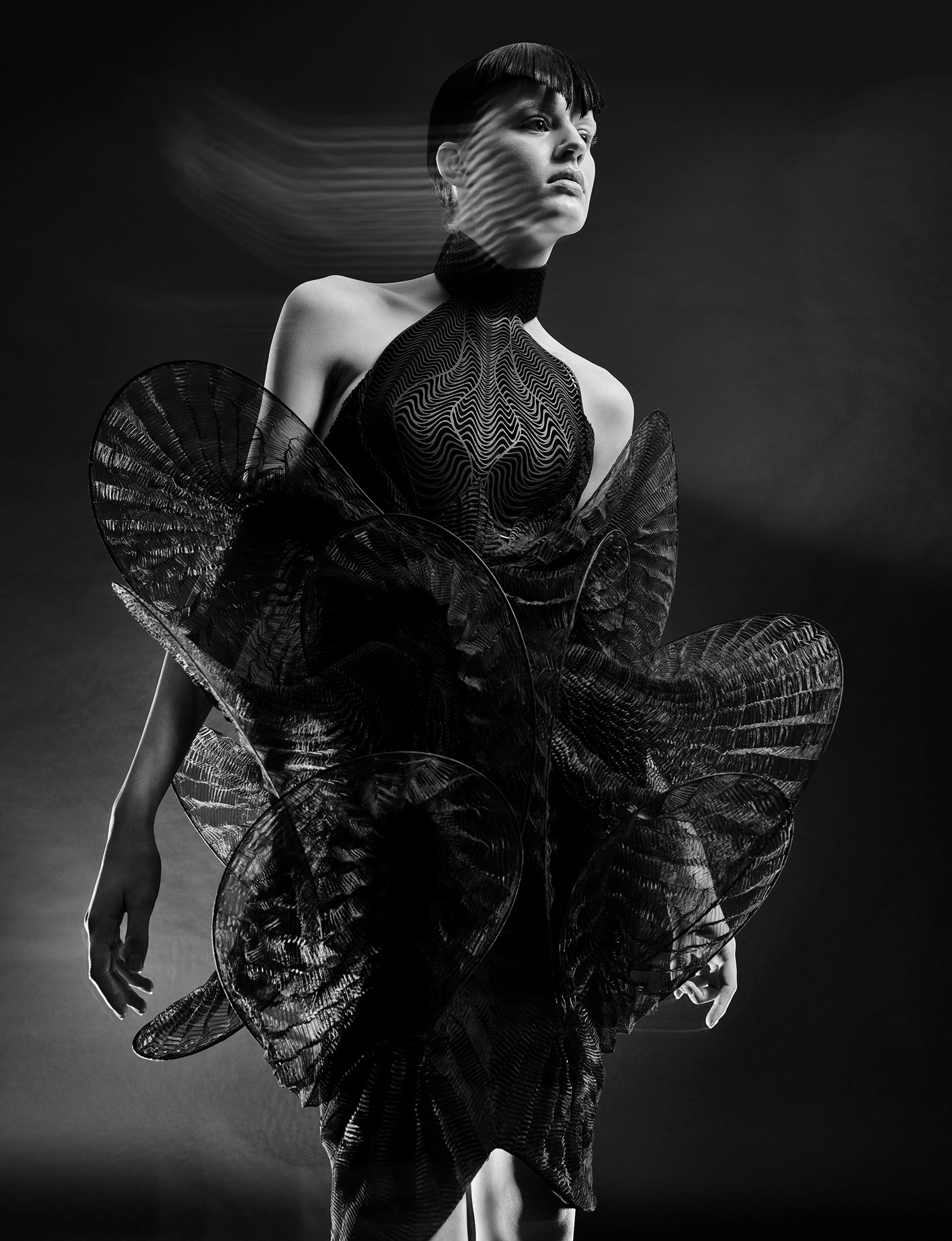
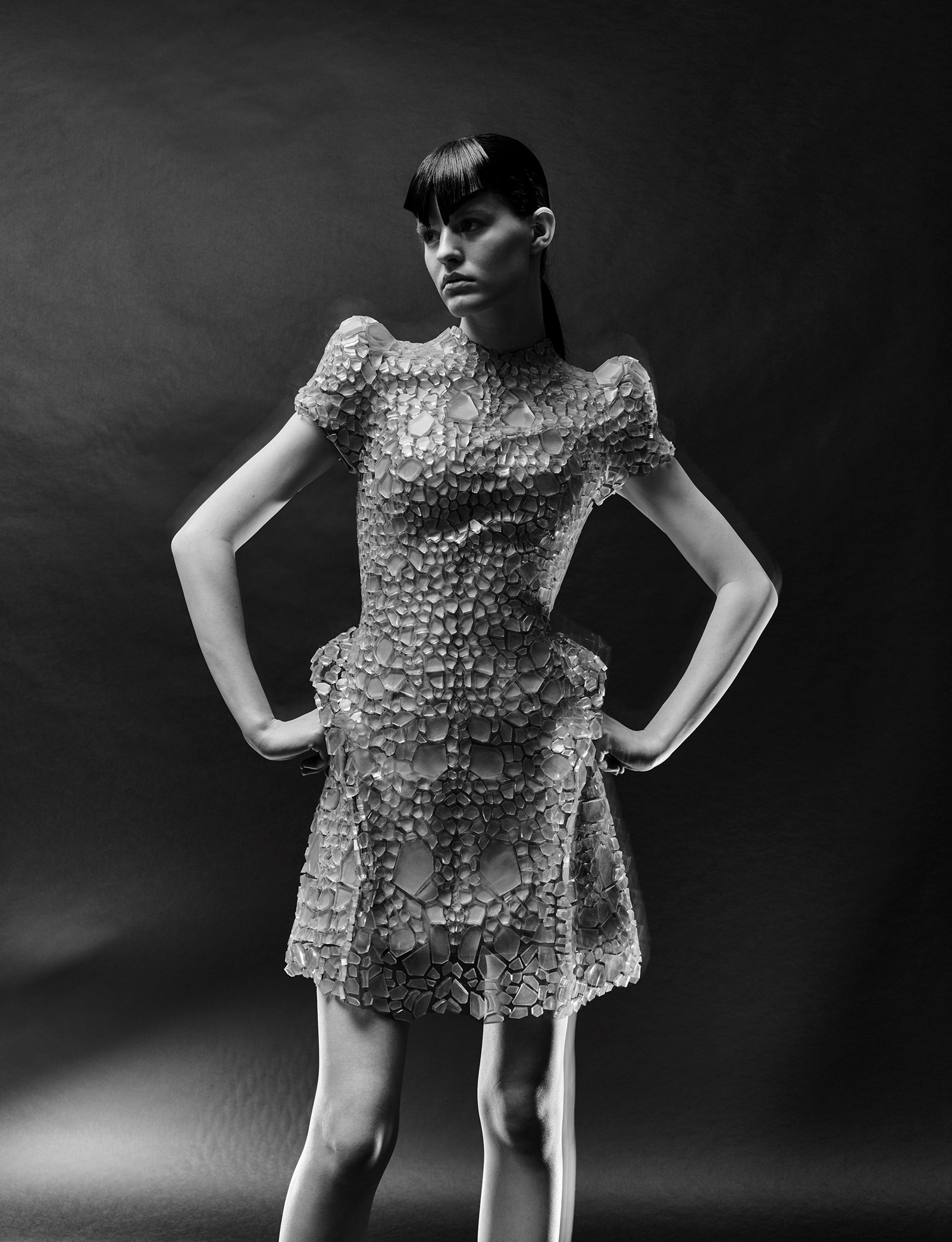
Van Herpen speaks with an unmissable affection and almost romantic disposition about her art (for make no mistake, art is what it is). “Seeing a dress grow over several weeks or even months is quite magical,” she says. “All that craft, innovation and effort that goes into one garment, it’s even more beautiful to me then when it’s finished.” Adds Beesley, “Opening a courier box from one studio to another is a delicious experience!”
That interaction between precision and serendipity, the artificial and the organic, the human touch and the might of machines captures the duality at the core of Van Herpen’s work. “There’s beauty in contrast,” she observes. “I need both chaos and control. When I have too much control I tend to search for disruption to make space for improvisation again and the other way around.”
One might not think chaos has a place in the refined world of couture – but Van Herpen proves otherwise. And isn’t that a timely reminder that there’s a beauty to be found in realness, in imperfection, even in the midst of sheer fantasy?
Model Hannah Elyse; Sittings editor Jerry Stafford; Hair Martin Cullen; Make-up Tom Pecheux; Make-up assistant Melissa Gibson
Special thanks to Emma Van de Merwe at IVH and Zohra Alami at Passage Paris
